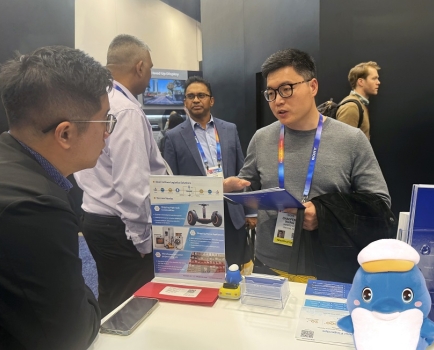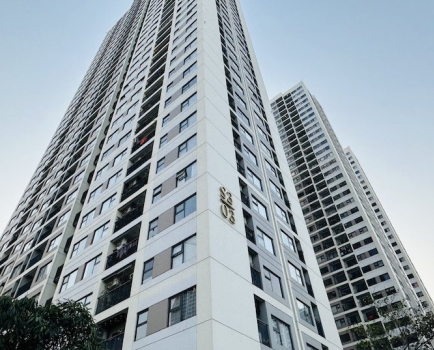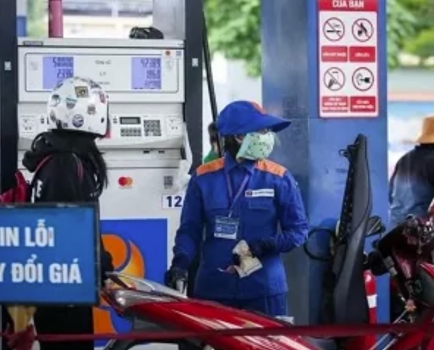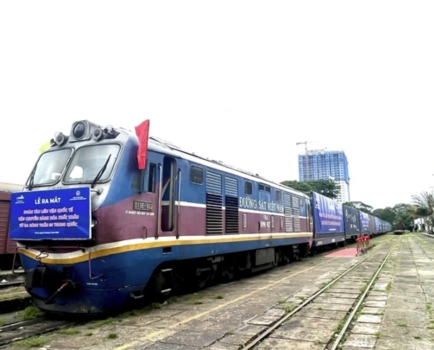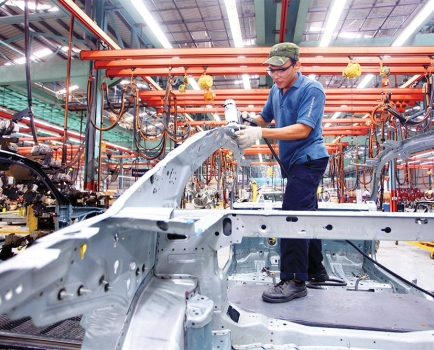Expanding public transportation spaces
Tue, 07 Jan 2025 14:26:00 | Print | Email Share:
Metro Line 1 (Ben Thanh-Suoi Tien), nearly 20 km in length, connecting the central area to the eastern part of Ho Chi Minh City, has officially been put into operation. This line meets residents’ travel needs and contributes to easing traffic pressure. It also marks a significant milestone, kickstarting Ho Chi Minh City’s plan to invest in seven urban railway lines spanning 355 km, scheduled for completion until 2035.
 Metro Line 1 attracts a large number of passengers who are students and office workers. (Photo: THE ANH)
Metro Line 1 attracts a large number of passengers who are students and office workers. (Photo: THE ANH)
Ho Chi Minh City will prioritise the comprehensive and synchronised development of urban railway lines, adhering to the transit-oriented development model along gateway transport corridors. This initiative aims to build a modern, sustainable, and intelligent city.
Shifting habits toward metro usage
Since December 22, 2024, when Metro Line 1 officially began commercial operations, the trains have consistently been full of passengers. The journey, taking approximately 30 minutes from the central Ben Thanh Station to the final Suoi Tien Station (including three underground stations), runs daily from 5:00 AM to 10:30 PM.
At 6:45 AM, Tuan Minh, a scheduling technician at a Japanese company in the High-Tech Park in Thu Duc City, entered Tan Cang Station to board Metro Line 1. The station is just a 10-minute walk from his apartment.
“I decided to switch entirely to commuting by metro nearly a week ago, instead of using my motorbike. This helps me avoid the heat, rain, and rush-hour traffic. With a monthly pass costing just 300,000 VND and an affordable electric bus fare from the station to the High-Tech Park, my commute has become very convenient,” Minh shared.
On a Saturday, Nguyen Truong Giang, an 80-year-old resident of District 6, joined his son at Ben Thanh Station to experience the city’s first metro line. “The city’s scenery through the train windows is breathtaking. Having lived in this city for nearly 50 years, this is my first time riding a metro train that I’ve only seen on TV until now. The staff is friendly, the ride is smooth and punctual, and the stops are thoughtfully scheduled for passengers to board and alight comfortably,” Giang said.
Tran Quang Lam, Director of the Ho Chi Minh City Department of Transport, stated: “To make Metro Line 1 accessible and convenient for residents, the Department has collaborated with the Public Transport Management Centre to invest in and operate synchronised and user-friendly public transport systems and infrastructure. The Public Transport Management Centre has deployed 17 electric bus routes simultaneously with Metro Line 1 and established five parking lots for personal vehicles at Metro stations. Besides electric buses, the city is also promoting the use of public bicycles, electric cars, and subsidised buses to create seamless journeys for residents travelling to metro stations.”
Continuing the development of 355 km of urban railways
According to Bui Xuan Cuong, Vice Chairman of the Ho Chi Minh City People’s Committee, Metro Line 1 is not just a modern urban transport project but also a symbol of the city’s aspirations for growth, integration, and sustainable development. It will become a modern public space and a vibrant part of the city’s urban culture. The city remains committed to prioritising investment in and the synchronised development of urban railway lines within its urban transport planning.
Recently, the city proposed to the government the investment of seven Metro lines spanning approximately 355 km, expected to be completed by 2035 with a total investment of around 40.21 billion USD. The overarching goal is to develop a modern and comprehensive urban railway system to drive Ho Chi Minh City’s socio-economic development.
The leadership of the Ho Chi Minh City Department of Transport reported that the city’s urban railway system development project for 2035 has been approved by the City Party Committee, People’s Council, and People’s Committee. It has also incorporated feedback from central ministries, departments, and agencies, as well as the National Assembly’s Economic Committee and the government.
To achieve the project’s goals, Ho Chi Minh City has proposed 32 policies or policy groups to the government. These include prioritising funding allocation, decentralising and delegating authority, streamlining procedures, accelerating progress, and diversifying investment resources.
Dr Phan Huu Duy Quoc, a member of the Advisory Council for Ho Chi Minh City’s urban railway development project, said that the project reflects the political system’s strong determination but also presents significant challenges not only for the city’s administration and construction sector but also for its residents, who will face disruptions in areas affected by the project.
During implementation, stakeholders must enhance autonomy and accountability, especially as the city gains greater authority under Resolution 98 (dated June 24, 2023) of the National Assembly. Additionally, there must be a gradual increase in localisation, the establishment of technical standards, and the development of skilled human resources, ultimately aiming for full mastery of urban railway construction and implementation technologies.
By: QUY HIEN/ NDO
Source: https://en.nhandan.vn/expanding-public-transportation-spaces-post143067.html
---------------------------------------------
Same category News :



